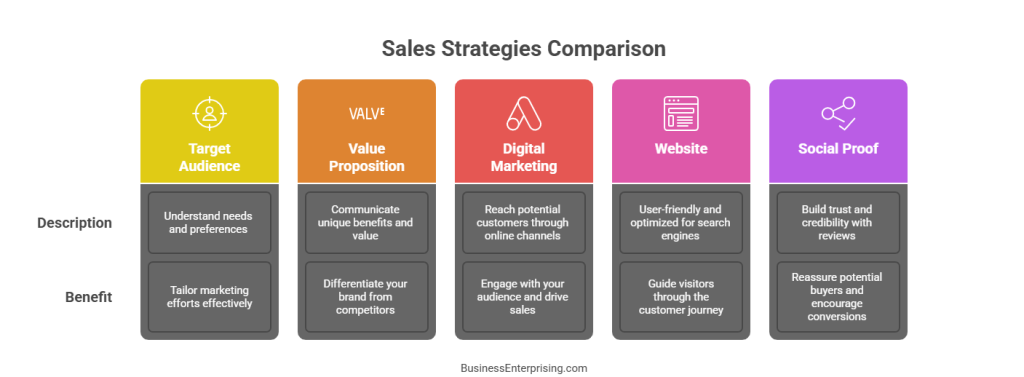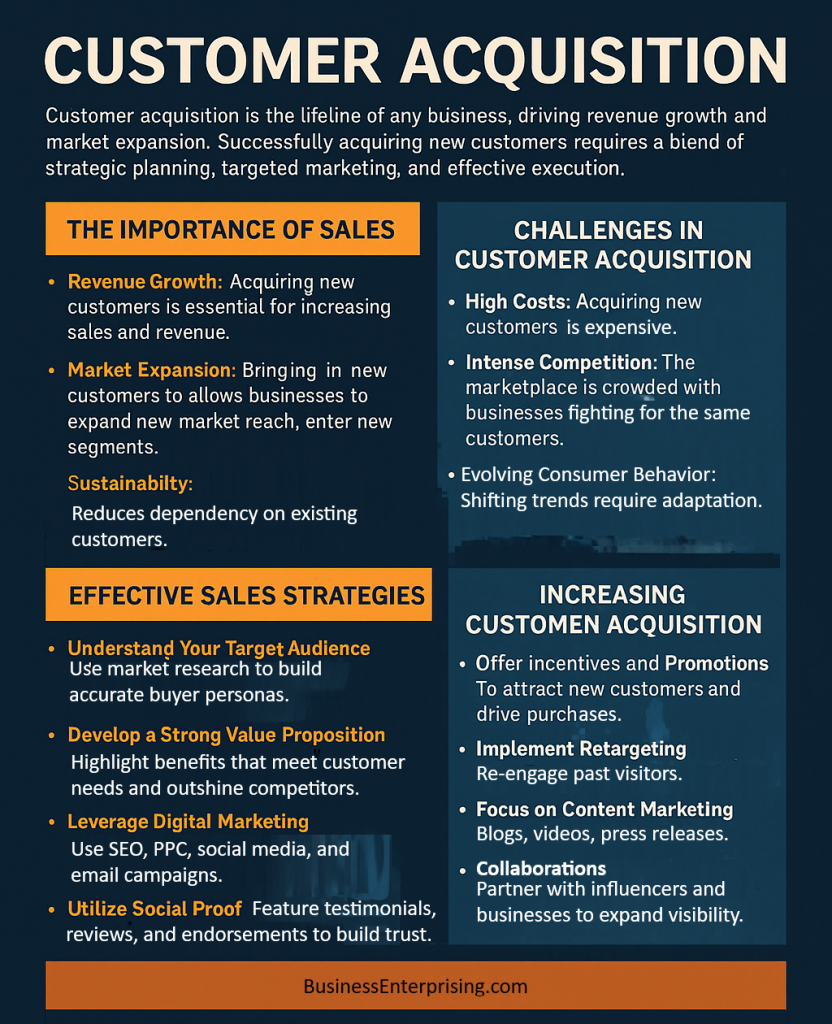
The Importance of Sales
Revenue Growth: Acquiring new customers is essential for increasing sales and revenue. Therefore, steady influx of new customers helps businesses scale and achieve financial objectives.
Market Expansion: Bringing in new customers allows businesses to expand their market reach, enter new segments, as well as diversify their customer base.
Sustainability: Relying solely on existing customers can be risky. Acquiring customers ensures a continuous flow of new customers, enhancing business sustainability.
Competitive Advantage: Effective sales strategies can set a business apart from competitors, capturing a larger market share.
Challenges in Customer Acquisition
Despite its importance, acquiring new customers comes with several challenges:
High Costs: Acquiring new customers can be expensive, involving costs related to marketing, advertising, and sales efforts.
Intense Competition: The marketplace is crowded with businesses vying for the same customers. Standing out in this competitive landscape requires innovative strategies and a compelling value proposition.
Changing Consumer Behavior: Consumer preferences and behaviors are constantly evolving. Businesses must stay attuned to these changes to effectively attract and convert new customers.
Data Overload: With vast amounts of data available, identifying actionable insights and targeting the right audience can be overwhelming.
Effective Sales Strategies
To overcome customer acquisition challenges and succeed in acquiring new customers, businesses should implement the following strategies:
Understand Your Target Audience: Conduct thorough market research to identify and understand your target audience. Analyze demographic, psychographic, and behavioral data to create detailed buyer personas. Understanding your audience’s needs, preferences, and pain points allows you to tailor your marketing efforts effectively.
Develop a Strong Value Proposition: A compelling value proposition clearly communicates the unique benefits and value your product or service offers. It should address the specific needs of your target audience and differentiate your brand from competitors.
Leverage Digital Marketing: Digital marketing offers a range of tools and channels to reach potential customers. Utilize search engine optimization (SEO) to improve your website’s visibility, pay-per-click (PPC) advertising for targeted ads, and social media marketing to engage with your audience. Content marketing, email campaigns, and influencer partnerships can also drive sales.
Optimize Your Website: Your website is often the first point of contact for potential customers. Ensure it is user-friendly, mobile-responsive, and optimized for search engines. Include clear calls-to-action (CTAs), engaging content, and easy navigation to guide visitors through the customer journey.
Utilize Social Proof: Social proof, such as customer reviews, testimonials, case studies, and endorsements, can build trust and credibility. Showcase positive feedback from satisfied customers to reassure potential buyers and encourage conversions.
Increasing Customer Acquisition
Offer Incentives and Promotions: To attract new customers and drive purchases, consider implementing a variety of incentives and promotions. For example, you can offer discounts, free trials, referral bonuses, or loyalty programs. These tactics not only create urgency but also provide compelling reasons for customers to take action.
Implement Retargeting Campaigns: In addition to initial outreach, retargeting campaigns are essential for reconnecting with individuals who have previously engaged with your brand but haven’t yet converted. By displaying relevant ads to these potential customers, you effectively remind them of your offerings and increase the likelihood of conversion.
Focus on Content Marketing: Furthermore, developing valuable and relevant content is key to capturing the attention of your target audience. Through blogs, videos, eBooks, webinars, and podcasts, you can educate and engage prospects while building trust and establishing authority within your industry.
Collaborate with Partners: Another effective strategy is forming partnerships with complementary businesses, influencers, or industry organizations. These collaborations can significantly expand your reach, as they allow you to tap into existing networks and benefit from the credibility of your partners.
Analyze and Optimize: Lastly, it’s crucial to continuously monitor the effectiveness of your sales strategies. Use analytics tools to track important metrics such as conversion rates, customer acquisition cost (CAC), and return on investment (ROI). Then, based on your findings, make data-driven adjustments to improve overall performance.
Conclusion
Client acquisition is a critical driver of business growth and success. By understanding your target audience, developing a strong value proposition, leveraging digital marketing, and utilizing social proof, businesses can effectively attract and convert potential customers. Offering incentives, implementing retargeting campaigns, focusing on content marketing, collaborating with partners, and continuously analyzing and optimizing efforts are also essential strategies for success.
In today’s competitive landscape, a strategic and data-driven approach to customer acquisition is essential. By prioritizing sales and employing these proven strategies, businesses can achieve sustained growth, expand their market presence, and build a loyal customer base. The journey to acquiring new customers requires dedication, creativity, and continuous improvement, but the rewards of a thriving, growing business make it a worthwhile endeavor.


